How To Do The Dumbbell Bench Press
Maximise your gains by switching out the barbell for your bench press
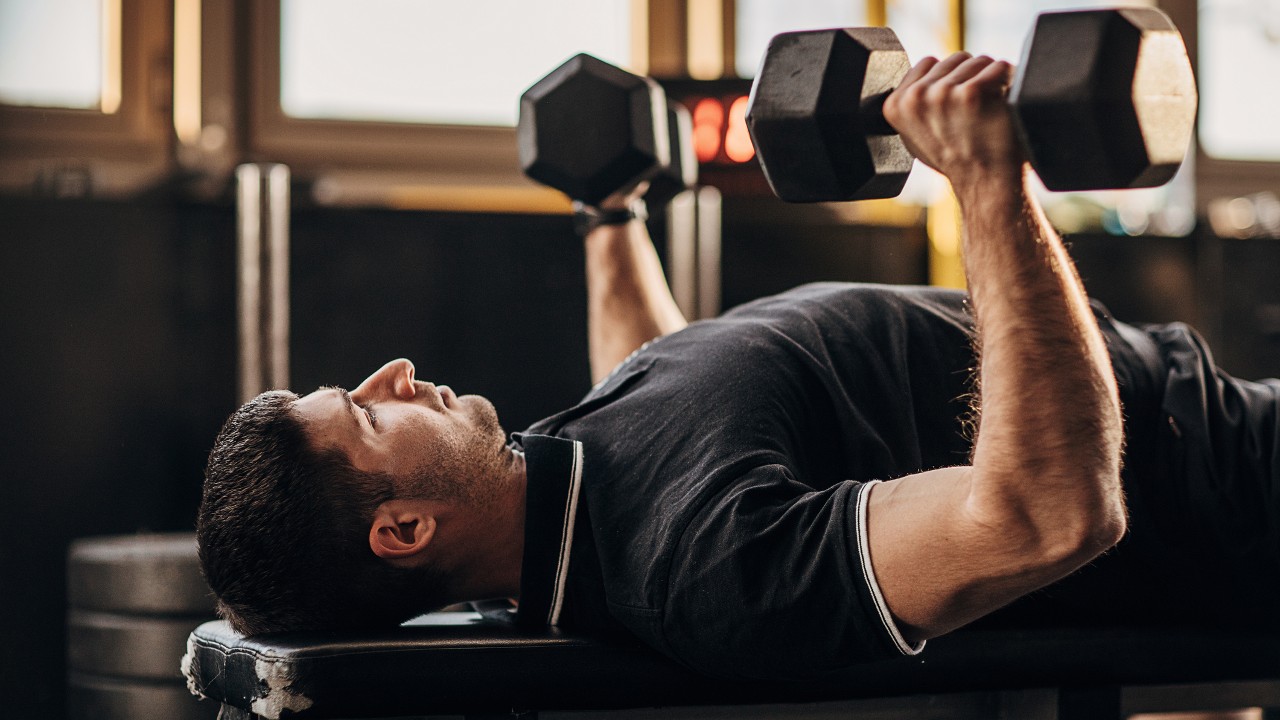
We don’t want to come over all fitness hipster here, but frankly, the barbell bench press isn’t the be-all and end-all of chest exercises. Sure, it’s a great strength-building compound move for the upper body, but its place as a workout staple is largely due to its ability to inflate one’s ego, rather than pump up their pectorals.
If you’re ready to look beyond the bench press, we believe there are five chest exercises you should do instead—one of which, suitably, is the dumbbell bench press. That’s right, all you need to do to boost your bench is switch out the barbell for a pair of dumbbells, especially if you’re looking to build a bigger chest.
To help you get the most from the dumbbell bench press, we enlisted the help of strength and conditioning coach and sports scientist Ryan Horton. Here he explains how to master the move and how to avoid common pitfalls, and weighs up whether the dumbbell bench press deserves to knock its barbell cousin off its perch once and for all.
Ryan Horton is the owner of Horton Barbell. He began his career as a strength and conditioning coach in 2004, holding positions ranging from assistant coach to director of strength and conditioning at a number of US universities, including Temple University. Before opening Horton Barbell, he held the position of director of applied sports science with the Georgia Tech American football team. He graduated with a BA in exercise physiology from Otterbein University in Ohio.
How To Do The Dumbbell Bench Press
You need only a weight bench and set of dumbbells for this move, making it a versatile option when you can't get to the bench press stations.
The Set-Up
“Grab a set of dumbbells and sit on the end of a bench with your feet flat on the floor,” says Horton. “Start with the dumbbells resting on your thighs, then lie back on the bench and, as you do, use your legs to push the dumbbells into place at your chest.”
The Press
Most people tend to hold the dumbbells perpendicular to their body, but Horton advises holding them so they form a 30-45° angle with your torso, with the end of the dumbbell closest to your chest also closest to your head.
“This angle means the elbows can be tucked in, rather than flared out from the shoulder when you press,” says Horton. He also recommends pressing the weights from level with the bottom of your chest, below your nipples, then driving them until your arms reach full extension directly above your chest.
Get the Coach Newsletter
Sign up for workout ideas, training advice, reviews of the latest gear and more.
The Return
The eccentric, or lowering, phase of the lift is arguably more crucial for muscle growth than the press. “Generally you should be looking to drive the weight up powerfully, taking about one second on the way up, then keeping everything under control on the way down, taking three to five seconds to lower so you promote greater hypertrophy,” says Horton.
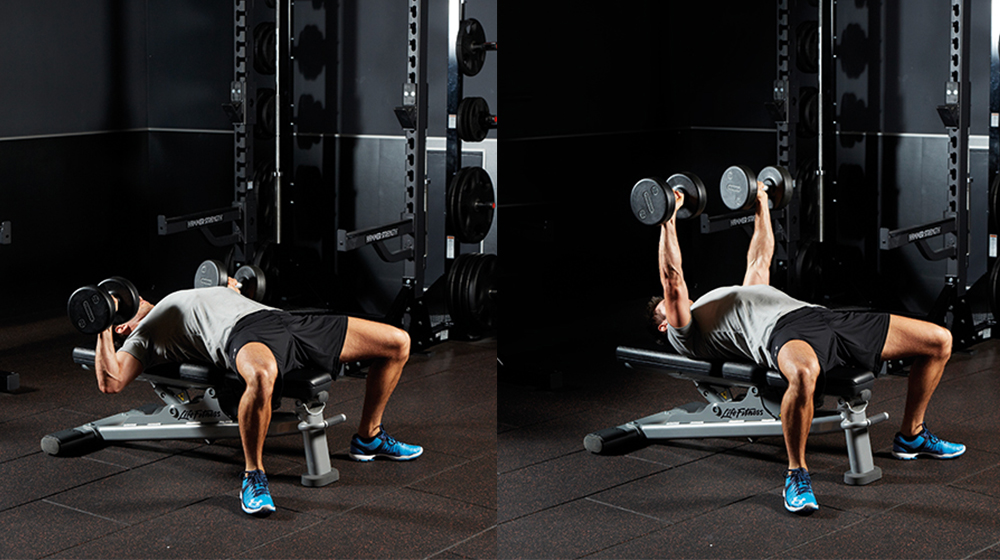
Common Form Mistakes
Going Too Heavy
The dumbbell bench press isn’t rocket science, but there are still a few bad habits and common pitfalls to avoid. “Firstly, there’s the common mistake with every exercise of trying to use too much weight,” says Horton.
Of course, you need to lift something challenging to build strength, but you should never opt for a set of dumbbells so heavy that they force you to compromise on your form.
This ego-driven approach is a one-way ticket to partial reps and injury, which leads us nicely on to Horton’s next point.
Not Completing The Full Range Of Motion
“After going too heavy, the biggest mistake I’ve seen is when people are not working through a full range of motion, instead only lowering or pressing the weight halfway,” says Horton.
Taking shortcuts will reduce the overall muscle activation involved with each rep, hampering your ability to add size and strength. Instead, Horton says, make sure you lower the dumbbells until they’re just about in line with your chest.
Elbow Position
Another all too common mistake Horton has spotted relates to the angle of the area between the upper arm and torso at the start of the dumbbell bench press.
“I want a 45° angle, not a 90° angle where the elbow is all the way out, in line with the shoulder,” he says. Not only will the correct position help you press heavier, it’ll also considerably reduce your risk of injury.
“Flaring out your elbows puts a lot of unnecessary strain on the shoulder joint, while also taking a lot of the emphasis of the exercise away from the pecs,” Horton adds.
Benefits Of The Dumbbell Bench Press
First and foremost, the dumbbell bench press is a tried-and-tested way to build strength and power to your upper body, while also adding considerable size to your pushing muscles.
“The dumbbell bench press involves multiple major muscle groups,” says Horton. “Your pecs, anterior delts, triceps, even muscles like your core and your lats, are all required to engage and help stabilize the weights for a smooth motion.”
Horton notes that the dumbbell variation of the classic bench press has the added benefit of being an isolateral exercise, meaning that you can work both sides of your body independently from each other to address weaknesses.
“This helps to prevent or even correct muscular imbalances,” says Horton. “If you have one side of your body that’s stronger than the other because you favor it, switching from the barbell bench to the dumbbell bench press can help correct that.”
Is the dumbbell bench press better than the barbell bench press?
“You don’t have to pick a side,” says Horton. “You can program a flat bench press on one day and incline dumbbell bench press on another, or an incline bench press then a flat dumbbell bench press.”
In that case, what are the main points of difference between a barbell and dumbbell bench press? “For the most part, a barbell movement is going to allow you to use more weight,” says Horton. “And if you can use more weight, you can build more strength.”
On the other hand, training with dumbbells can be safer and promote a healthier range of motion for the chest and shoulders. “The dumbbell bench press may not be so much of a pure strength builder, but you can tailor the move for your desired range of motion,” says Horton. “It’s also an isolateral movement, meaning you can’t favor one side or the other.”
That said, if your overarching goal is to build upper-body strength, you can’t beat the combination of the barbell bench press and pull-up, says Horton. “Those should always be your top two movements if upper-body strength is your goal.”
Dumbbell Bench Press Variations
Incline dumbbell bench press
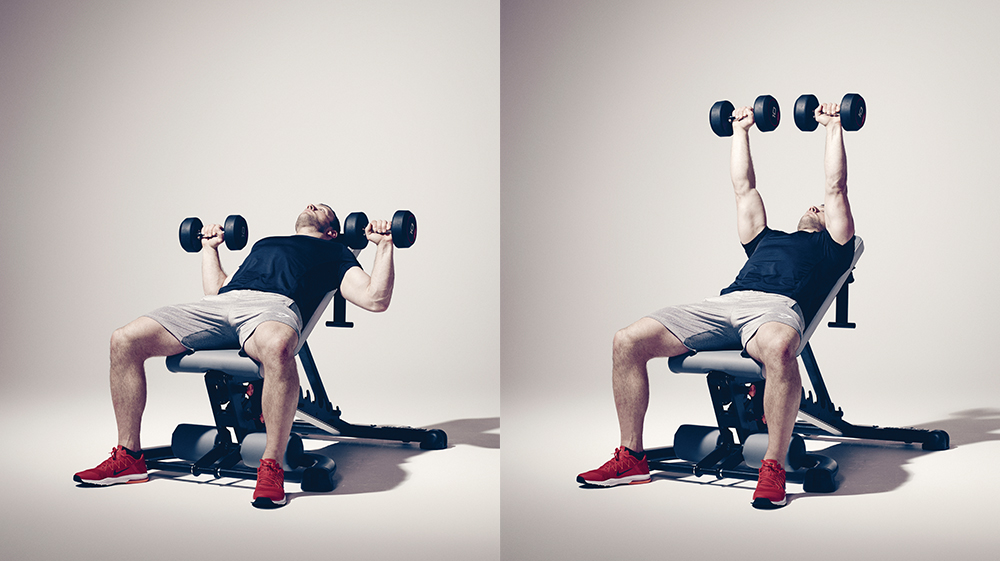
The incline press works the top of the chest and the front of your shoulders harder than the standard exercise, boosting the strength of your muscles and hopefully increasing the amount you’ll be able to lift when performing the standard flat bench press.
Set up a bench at an incline of 30-45° and sit with your feet flat on the floor and your back on the bench. Lift the dumbbells to chest height with your palms facing forwards. Breathe out and push the dumbbells up until your arms are fully extended, using your pecs to power the movement. Don’t let the dumbbells touch. Pause for a second at the top, then slowly bring them back down as you inhale.
Decline dumbbell bench press
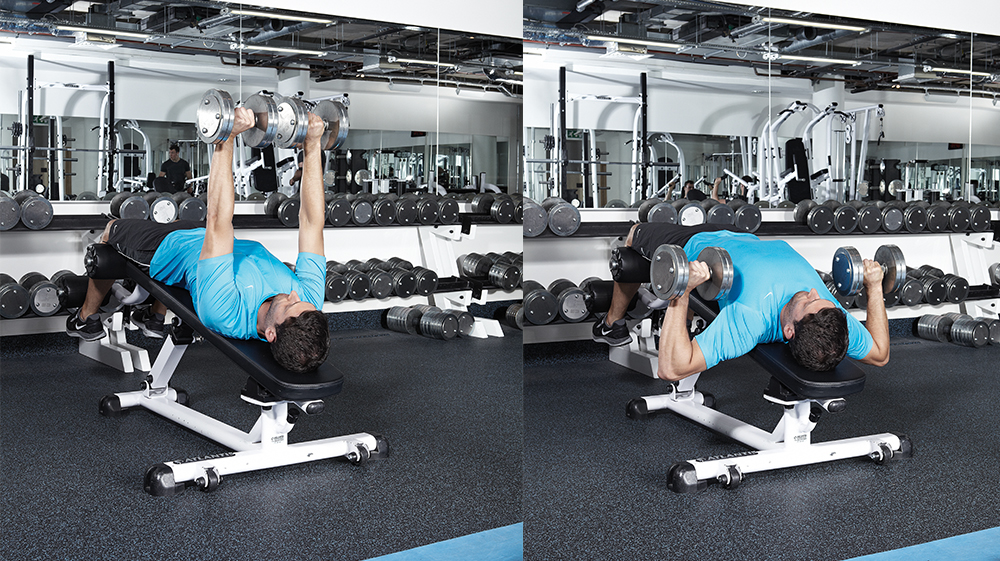
If the incline bench press targets the top of the chest it stands to reason that the decline bench press will hit the lower chest muscles harder, and you might also find with this variation that you can lift more weight when on a decline than with the flat or incline press. Set up a bench so it’s at a 45° angle and sit on the top of the slope. Lean back (carefully) and bring the dumbbells up to your chest. Press the weights straight up slowly, then bring them back down to your chest. The natural tendency is to let the weights drift back over your head during the lift, so focus on avoiding that. It can be worth having someone check your form when first attempting this move.
Alternating dumbbell bench press
If you’re using dumbbells rather than a barbell with the aim of evening out any strength imbalances in your body, the alternating version of the exercise is one you should get well acquainted with. The form is the same as with the standard dumbbell bench press, except that you lift one weight at a time, keeping the other by your chest. The effect is to isolate each side of the body even more effectively than the standard version of the move. Start on your weaker side and you’ll soon see how much more of a challenge it is to lift one weight at a time.
Hammer press
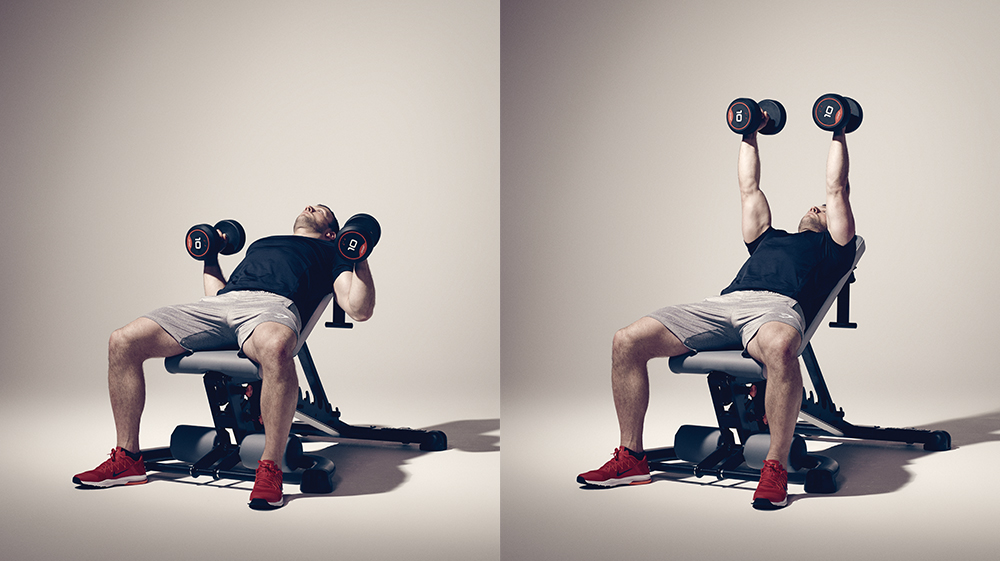
By holding the dumbbells in a hammer grip—with your palms facing towards each other—you increase the load on your triceps compared with the standard grip for the bench press. You can do this variation with either a flat bench or set it at an incline, with the latter focusing more on the upper chest muscles.
Set up with the dumbbells held at chest height in a hammer grip and press them up until your arms are fully extended. Pause at the top, then bring the weights back down slowly.

Harry covers news, reviews and features for Coach, Fit&Well and Live Science. With over a decade of training experience, he has tried everything from powerlifting to gymnastics, cardio to CrossFit, all in a bid to find fun ways of building a healthy, functional body.
- Nick Harris-FrySenior writer









